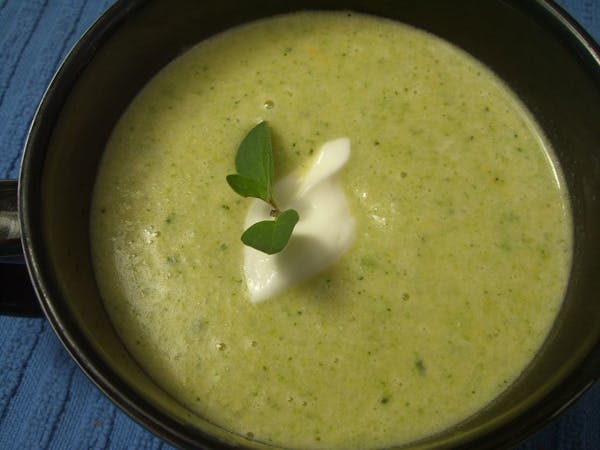After picking meat off the bones from two roasted chickens, my daughter was about to toss the carcasses into the garbage when I reminded her, "That's the best part."
Indeed it is. Whether it's the ready-roasted supermarket hen that you picked up on the way home from work, the leftover ham bone from the holiday dinner or the beef bones left on the serving platter, the remains of the meal are not scraps to discard, but treasured ingredients to form the basis of stock, the foundation of soup.
It's so automatic for me that before I clean up the kitchen post-dinner, I have filled the soup pot with water and added leftover bones and bits of meat, a few coarsely chopped vegetables (onion, carrot, celery, the latter with leafy tops if I've planned ahead) and aromatics (bay leaf, peppercorns). It's what I call my free meal — waste not, want not — simmered with the bits and pieces of produce found in my refrigerator crisper. No need for the vegetables to be at their best as their last remaining flavors will be extracted in the broth. The bones from the roasted meat result in a dark stock with plenty of flavor.
It's perfectly fine to use uncooked meat with bones (chicken breasts or thighs, turkey neck bones, for example) to make the stock. But the richness of roasted meat bumps up the flavor in a way that suits me. (A lighter-colored, more delicate chicken stock will be the result of preparing it with raw meat.) No leftover bones? You can always brown or roast the bones before you start making the stock.
To make your own stock
Start with cold water and cover the bones and vegetables with water, so there's at least 2 inches of liquid above the ingredients. A tall soup pot is best (less water evaporates), but you can certainly use a smaller pot if that's what you have. Keep in mind that it doesn't take any longer to make a lot of stock than it does to make a little.
You'll want to bring the mixture to a boil, then drop it to a low simmer and keep it going, with the pot semi-covered, for as long as the meat and vegetables have something to offer. That's definitely for at least an hour, maybe two or more, adding additional water as the liquid reduces. The fragrance of the broth will waft through your kitchen like an aromatic humidifier.
Last steps for stock making
Once the stock is done, strain it (discarding the bones, meat and vegetables, all of which are tasteless by now) and cool the liquid in the refrigerator, where the fat will rise to the top and harden, making it easy to discard. Then you're ready to make soup.
A quick version
Not enough time? You can make a quick version by doctoring store-bought chicken stock with your own vegetables for added depth of flavor (see recipe).
And now the real cooking begins, with either a favorite soup recipe or something new.
Follow Lee Svitak Dean on Twitter: @StribTaste.
What's the difference between broth and stock?
Stock is the foundation of many types of dishes, including soup. Broth is what it's called when you're serving it on its own or with other ingredients, such as noodles or vegetables. The biggest difference between the two is that broth is more highly seasoned than stock (stick with low-sodium broths when you're buying commercially made).
